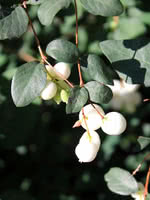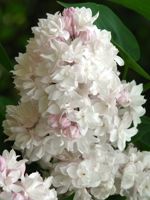Mon-Fri 9am - 5pm Mountain time
Western Snowberry vs Beauty of Moscow Lilac
Symphoricarpos occidentalis
Syringa vulgaris Beauty of Moscow (Syringa vulgaris Krasavitsa Moskvy)
NOT AVAILABLE THIS SEASON - MIGHT RETURN
Like the Common Snowberry, the Western Snowberry is a small shrub with pink flowers useful for feeding livestock and preventing erosion. Unlike the common species, however, the Western Snowberry is much more suited to wet conditions, capable of persevering through poor soil drainage and occasional flooding.
After the Snowberry's flowers have bloomed, it produces berries which often last on the plant through winter. These berries are toxic to humans, but livestock and local wildlife love them! Those hoping to attract wildlife to their property can plant Snowberry and expect to see animals foraging on it much later in the year than other plants.
Beauty of Moscow Lilac is a flowering shrub known for its highly fragrant, double flowers. The buds start as a pale pink and give way white blooms that have double the number of petals compared to other Lilacs. While the flowers are mostly white they can often take on a subtle pink blush.
The striking blooms, abundant flowers, and long bloom time make the Beauty of Moscow Lilac one of the top Lilac cultivars. The flowers are known for attracting hummingbirds, bees, and other pollinators to your landscape.
Western Snowberry Quick Facts
Beauty of Moscow Lilac Quick Facts
Toxicity: berries are toxic to humans

